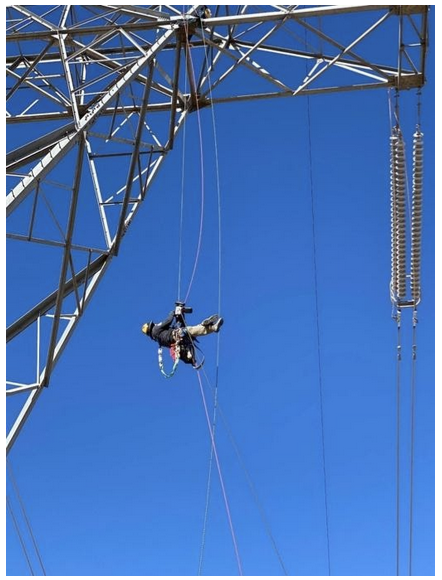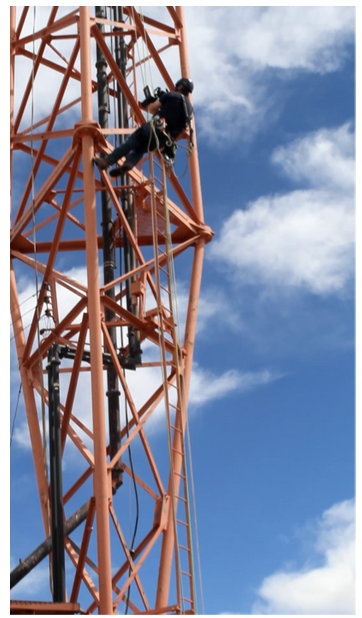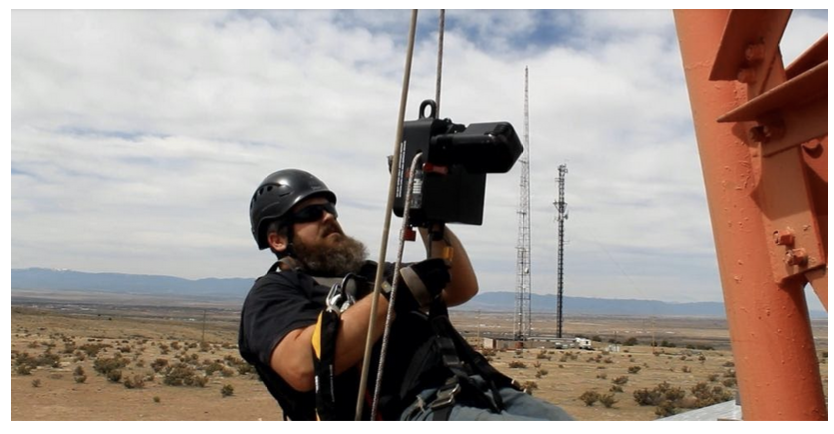Online virtual instruction has been critical to keeping tower climbers certified during the pandemic. Recently, however, Safety One Training, Inc. has seen a move back to more hands-on education, which is good news for power ascender training.
“We’re starting to see a transition back to hands-on learning, which is really what we believe to be the best way to provide training,” says Ty Fenton, General Manager, Safety One. “The fundamentals of learning how to use the power ascender rely on repetition. You need to get your hands on the device and learn how to load the rope.” A power ascender whisks tower climbers to the top of a tower. Think mechanized, vertical zip line.
Safety One offers a half-day power ascender training course, which it developed around teaching climbers how to use the Ronin Lift Power Ascender. Safety One’s staff collaborated with Ronin to create a custom curriculum.
During the first half of the training, which is endorsed by Ronin, Safety One teaches the fundamentals of using power ascenders safely. Then, in the afternoon, students get hands-on with the power ascender. They learn how to inspect the device, how to set up anchorages, load the rope, inspect the rope and then use the device in the ascend and descend modes. Climbers also learn how to perform a rescue using the power ascender, as well as how to use it for hoisting or lowering equipment.

“In all of our fall protection courses, we talk about first man up systems,” Fenton said. “The power ascender completely eliminates the hazard of exposing somebody to a potential fall hazard of being the first man up. Operators will set ropes from ground level in a very practical manner.”
Safety One developed the power ascender training after becoming convinced that its use would become widespread among at-height workers in a number of industries, including towers. It’s early days, but the organization has already trained workers in telecom, utilities, fire rescue, and even window washing.
“We have an understanding that if folks are required to use a piece of equipment for work purposes,
Power ascender training is designed to be an add-on for the Competent Fall Protection Safety & Rescue Certification Course. “We operate under the expectation that the folks who’ve come through to get this training have some familiarity with the specific requirements for working at height, and that they are at least well-trained in full-body harnesses, the fundamentals of working at-height and rescue,” Fenton said.

“The basics of safe climbing are the same with a power ascender,” Fenton said. “This is just an additional tool to make access to the top of the tower safer, quicker and more efficient.”
For more information about Safety One Training, visit https://safetyoneinc.com/. For more information about Ronin, visit https://roninpowerascender.com/.
All photos courtesy Safety One Training International, Inc.
By J. Sharpe Smith Inside Towers Technology Editor





Reader Interactions